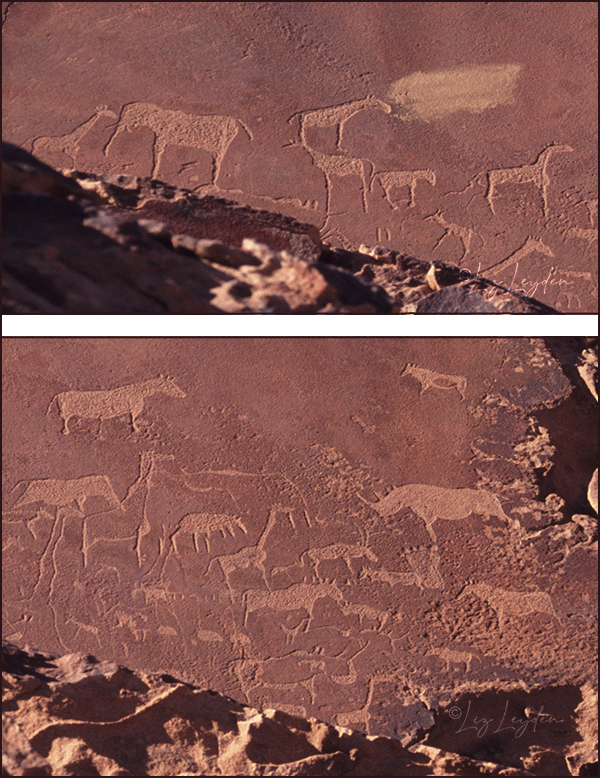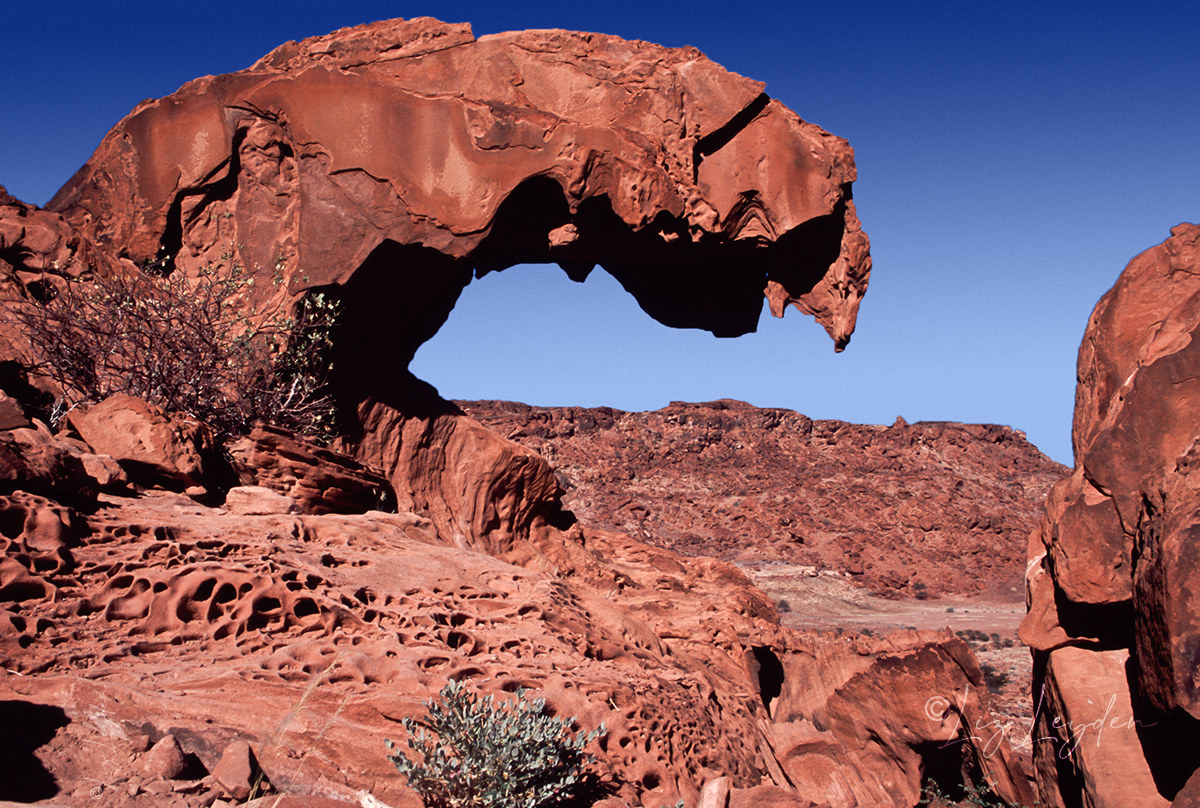Lion’s Jaw Rock or Lion’s Mouth Rock, a dramatic sandstone formation at Twyfelfontein in Namibia.
Twyfelfontein is a popular visitor destination in the Kunene region of Namibia, fka Damaraland. It lies about 430km north-west of Windhoek, the capital of Namibia. The site is known to have been inhabited for at least 6,000 years. At that time, the inhabitants were Stone-age hunter-gatherers. Later, the area was inhabited by Khoikhoi herders, related to the San bushmen.
Each of these groups used the area around Twyfelfontein (‘uncertain spring’ / ǀUi-ǁAis ‘jumping waterhole’ as a worship area where they conducted shamanistic rituals.

Supporting these rituals, the people chiselled over 2500 petroglyphs (rock-carvings) into the dark ‘desert varnish’ patina through to the paler sandstone below. In 2007, Twyfelfontein became the first Namibian site to achieve UNESCO World Heritage status.
The site forms a coherent, extensive and high-quality record of ritual practices relating to hunter-gatherer communities in this part of southern Africa over at least 2,000 years, and eloquently illustrates the links between the ritual and economic practices of hunter-gatherers.
UNESCO
All photos on this pate are copyright © Liz Leyden. All rights strictly as agreed in writing with the author or her agent.
The top photo of Lion’s Mouth Rock is available to purchase as a stock photo from my portfolio at iStock.
The two small images of petroglyphs (rock-carvings) are both details of the same photo, also available from iStock.


